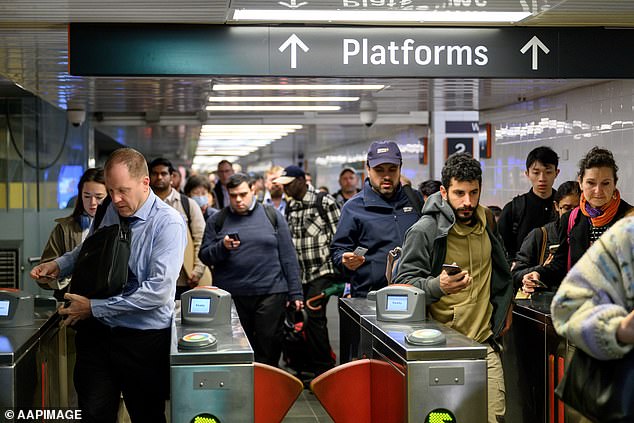A marketing executive has revealed she was forced to start a second job as a children’s entertainer as she struggles with Australia’s cost-of-living crisis.
Daniela Sanchez, 27, moved to Sydney in March 2024 and started working for a marketing agency.
The 27-year-old, who is originally from Ecuador and spent four years living in the US, explained she works about 40 hours a week in her office role.
Despite receiving a pay rise in her current role, Ms Sanchez explained her $70,000 a year income was still not enough.
The marketing executive was forced to look for a second job as her and her husband struggled with skyrocketing rent costs.
Six months ago, Ms Sanchez started a second role as a children’s entertainer in which she works 10 hour a week.
In her role as a children’s entertainer, Ms Sanchez charges $100 for the first hour and $30 for every additional hour.
Ms Sanchez said she was forced to ‘hustle’ just so she and her husband could live in Sydney.

Daniela Sanchez, 27, started a second job as a children’s entertainer after her role as a marketing executive was not enough to cover the skyrocketing cost of living in Sydney
‘The craziest thing to me is you need to hustle to live in a decent place,’ Ms Sanchez told SkyNews.
‘That should be the bare minimum.
‘Most of the apartments you can find within budget, if you only have one job are in a very bad shape. They’re old and full of cockroaches.’
Ms Sanchez added she has even started looking for a third side hustle just to afford living in Sydney.
It comes as millions of working adult Australians have been driven to take on a second job after feeling the pinch of the country’s rising living costs.
The 2025 Deel Australian Payday Expectations Report found 56 per cent of full-time office workers – an estimated 3.2million Aussies – felt they need to supplement their income with another job.
The report, which surveyed 1,013 full-time office workers, revealed almost three in five had started a second job or planned to start a second job in the next 12 months.
An additional 20 per cent of full-time workers who were surveyed claimed they wish they had taken up a second job to supplement their income.

According to a 2025 Deel Australian Payday Expectations report, 56 per cent of full-time office workers felt they need to supplement their income with another job (stock image)
Meanwhile, more than 52 per cent of workers said they had used a financial service to help bridge the gap between paydays, according to the report.
More than half of the workers surveyed also claimed their wage was not keeping up with inflation.
The rising cost of living and skyrocketing inflation has seen a huge uptake in ABN registrations as many Australians turn to freelance work for extra money.
Between January and April, this year, more than 104,000 new businesses were registered in Australia, according to ASUC Company Registration Statistics.
Almost 32,000 new businesses were registered in May 2024 – marking a three-year high.
Deel’s Country Leader for Australia Shannon Karaka said it was ‘no surprise’ Australians were turning to side hustles.
‘With the cost of living hitting home for millions of Australians, it’s no surprise that so many are turning to side hustles and second jobs to stay afloat,’ Ms Karaka said.
‘What our research shows is that workers don’t just need more income, they need better financial support and clarity from their employers.
‘Flexibility isn’t just about where we work anymore, it’s about how we’re paid, how we plan, and how we build financial resilience in a fast-changing economy.’
Share or comment on this article:
Young Aussie’s career decision exposes brutal reality for millions during the cost-of-living crisis
